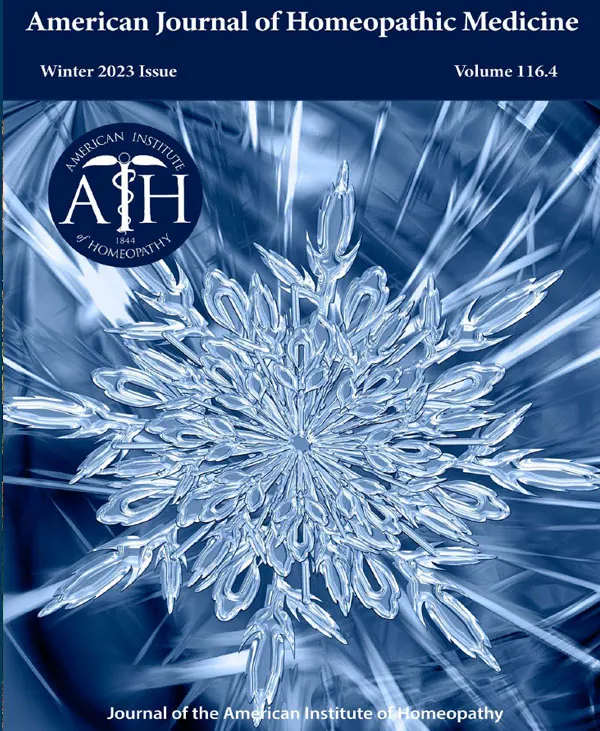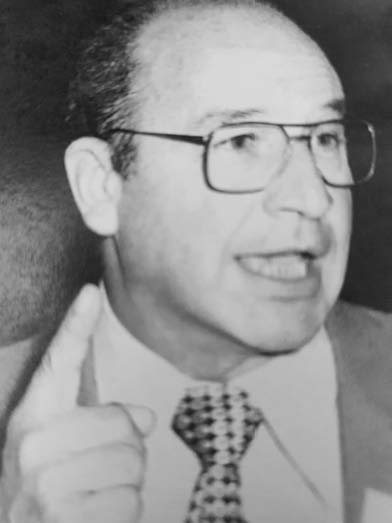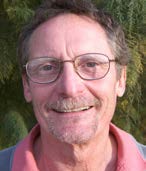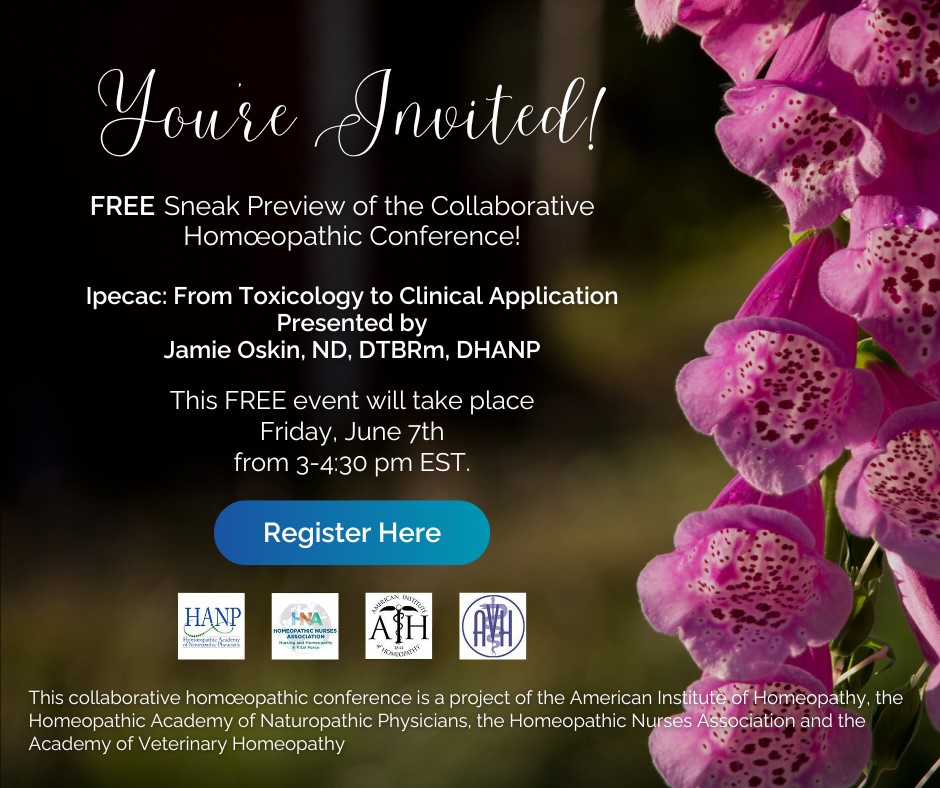
An Appreciation of Jacques Jouanny’s Life and a Review of His Opus “The Essentials of Homeopathic Therapeutics
by Jay Yasgur, Pharm., M.Sc.
 Jacques Jouanny, MD, author, educator and clinician extraordinaire, passed on February 14, 2023 at the age of 96. Born on the 27th of January 1927, this important French homeopathic clinician, researcher, educator and author received his medical degree from the Paris faculty of medicine in 1952. He became an allopathic doctor specializing in internal medicine; however, it wasn’t until 1960 that an interest in homeopathy arose in him, and it was only in 1965 that he was formally introduced to and then mentored in our beloved art by Dr Charles Rousson (1904-1974) and Jean Boiron, PhD (1906-1996). They convinced him to study at the L’Ecole Francaise d’Homeopathie whereupon he received his certification in homeopathy in 1968. Shortly after he became a consultant homeopathic physician at L’hopital St-Luc a Lyon and served in that capacity until 1980. His son, Jean-Jacques Jouanny, MD, also became a physician and a homeopath. (For further information about his life and career see Dr. Maillot’s comments at the end of this article.)
Jacques Jouanny, MD, author, educator and clinician extraordinaire, passed on February 14, 2023 at the age of 96. Born on the 27th of January 1927, this important French homeopathic clinician, researcher, educator and author received his medical degree from the Paris faculty of medicine in 1952. He became an allopathic doctor specializing in internal medicine; however, it wasn’t until 1960 that an interest in homeopathy arose in him, and it was only in 1965 that he was formally introduced to and then mentored in our beloved art by Dr Charles Rousson (1904-1974) and Jean Boiron, PhD (1906-1996). They convinced him to study at the L’Ecole Francaise d’Homeopathie whereupon he received his certification in homeopathy in 1968. Shortly after he became a consultant homeopathic physician at L’hopital St-Luc a Lyon and served in that capacity until 1980. His son, Jean-Jacques Jouanny, MD, also became a physician and a homeopath. (For further information about his life and career see Dr. Maillot’s comments at the end of this article.)
Several of Jouanny’s works were translated into English and published by ‘editions Boiron’, viz. Homeopathic Practice in Childhood Disorders (1992; with Michel Aubin, Denis Demarque, Pierre Joly, Yves Saint Jean; translated by Dany Clausen), Homeopathic Therapeutics: Possibilities in Chronic Pathology (1994; with Jean-Bernard Crapanne, Henry Dancer, Jean-Louis Masson; translated1 by Anne and Jean Wadier and Sandy Feider), Homeopathic Therapeutics: Possibilities in Acute Pathology (1996; with Crapanne, Dancer and Masson), Pharmacology and Homeopathic Materia Medica (1997; with Denis Demarque and Bernard Poitevin; translated by Anne-Marie Cervera and Graham Fox), The Essentials of Homeopathic Materia Medica (1980; the translation by Dany Clausen is excellent) and The Essentials of Homeopathic Therapeutics (1980):
“The author suggests that one may, in learning the materia medica, find ‘oneself hopelessly lost in the thick and thorny corpse of pathogenesis and unable to distinguish anything clear…’ His work is an attempt to ‘learn, in the first stage, that which is essential.’ He presents the pathogenic action, typology, characteristic symptoms, and the principal clinical indications of the remedies. Written in 1980, when focus on the mental symptoms was gaining popularity through the influence of the ‘Vithoulkas/Kentian camp,’ the author suggested that the only mental symptoms that should be considered in any case were the ones that were produced ‘experimentally’—that is, seen in the provings themselves.”
– Julian Winston (The Heritage of Homoeopathic Literature, p. 40).
This book discards the “spiritual” aspects of homeopathy as espoused by Vithoulkas, Kent and others and, with this in mind, could be considered a development of the work of pathological prescribing as advocated by the British homeopaths Dr. Richard Hughes (1836-1902) and Dr. William Henderson (1810-1872) previously. Jouanny’s 1994 work, in collaboration, goes into detail by paying greater attention to the concepts of nosodes, isodes, miasm and terrain. It could be considered a combination of those two 1980 books.1
Dr. Jouanny was a proponent of pluralism, which became popular and is still very much so in France. It is often referred to as “the French school” of homeopathy. Here, doses are given by prescription in a cookbook fashion, for a particular condition. The remedy is usually given in low potencies (5, 9, 12 or 30C), frequently over a period of days or longer. Doses may also be administered with an intercurrent or nosode, which would be given less frequently, perhaps monthly. As a simple example, under “Insect Bites,” he suggests three remedies, Apis mellifica, Tarentula cubensis, and Ledum palustre. For Tarentula cubensis he suggests giving it in the 7 or 9C potency 2-4 times a day, sometimes in alternation with Apis mellifica. If there is infection, add Pyrogenium 5C, one or two times daily. Under Basic Remedies, which could also be called chronic or terrain remedies, he offers, “These should be prescribed for patients who systematically suffer from spectacular edematous reactions each time they are bitten or stung by an insect or for those people who seem to attract insect bites. As they often are heard to say: ‘If there is one mosquito or flea around, it’s sure to get me!’
“These patients, who are prone to particularly severe cutaneous reactions and who attract parasites, usually have a psoric terrain.
“They are amenable to the remedies of this category and most particularly to: Suphur, if they dislike heat; Psorinum, if they are cold-sensitive; Sulfur iodatum, if they display no particular sensitivity to temperatures.
“These remedies should be prescribed in 15 or 30C potencies (one weekly or bi-monthly unit-dose tube).
– The Essentials of Homeopathic Therapeutics (p. 276).
Much, if not most of Jouanny’s writings, are influenced by allopathic disease categorization, but, of course, employ homeopathic remedies, which, as we can all agree, are more desirable than allopathic medications whether they be over-the-counter (OTC) or prescribed by a physician.
While studying with Rousson and Boiron, Jouanny must have become aware of the classical approach, but Jouanny’s aim seems to have been to garner a wider, perhaps skeptical, allopathic audience. Thus, his pen also spoke to the mainstream medical community. This doesn’t mean his writings are of no use for the homeopathic community—for they surely are. I believe his goal was to connect with allopaths by making it simpler for them to understand some of the homeopathic viewpoints when framed in allopathic medical themes and terminology.
“Theoretically, it may seem wrong to speak of homeopathic therapeutics where ‘nosologically defined diseases or syndromes are concerned, as homeopathic therapy is by definition based on the individual reactional mode of each patient with reference to his disease. Nevertheless, it is important to remember that this book is designed for physicians who think of therapy only with reference to the nosological diagnosis. [Jouanny’s emphasis]”
– The Essentials of Homeopathic Therapeutics (p. 5).
I don’t know for certain if my viewpoint is entirely correct as I haven’t an open window into the good doctor’s mind. Nevertheless, the pluralist approach as espoused by Jouanny and others seems to serve humanity well, at least in the humble opinion of this author.
Whether one follows the pluralist or classical methodology, much of the popularity of homeopathy in France is due to the former approach and perhaps the homeopathic community should be grateful for that fact. Nonetheless, it also needs to be said that classical homeopathy is thriving in that country of 65 million.
The Essentials of Homeopathic Therapeutics (1980, various reprints) is a very popular book and deserves a thorough acquaintance. This work is divided into two parts, I. Theory and Technique of Homeopathy (100pp) and II. Clinical Applications (300pp). Part I consists of eight chapters, covering topics which are familiar to us all : General Principles and Methodology of Homeopathy; Homeopathic Symptomatology, The Case History, Determining Homeopathic Remedies in Acute Diseases, Determining Homeopathic Remedies in Chronic Diseases, Typology and Constitutions; Homeopathic Remedy, Dosage and Prescription.
These several pages discuss the homeopathic methodology via the allopathic framework while at the same time gently but persistently criticize the allopathic model in a clear, logical and rational manner. There are no unsettling accusations; only the truth, as Jouanny sees it, is presented. The sole area he leaves undiscussed in this one-hundred page section is repertorization. If he had decided to include it in the book, he would probably have lost some, if not most, of his audience.
The second Part covers about fifty conditions. He chose these conditions because he and his colleagues had first hand, clinical successes and positive experiences.
To provide a flavor of the pluralist approach, more specifically his approach, let us briefly examine one of the fifty chapters in this part, “Eczema.” Two categories of eczema, “constitutional eczema” and “acquired eczema,” are explained before the author examines Symptomatic Remedies (Calcarea carbonica, Anagallis arvensis and Natrum muriaticum) and Basic Remedies (antipsoric and antisycotic remedies).
“It is sometimes indispensable, however, in stubborn chronic cases, to prescribe the Basic Remedy [chronic, terrain remedy] daily in high potencies. This is frequently the case for Sulfur or Thuja; you should not hesitate to prescribe these remedies in 9, 15 or 30 C potencies every day (five globules each time). In some cases the two remedies may be alternated.” [potencies higher that 30C are seldom discussed or used]
– The Essentials of Homeopathic Therapeutics, p. 227.
The final topics of the “Eczema” chapter are Isopathy (heteroisopathics, autoisotherapics, phlyctenotherapy), drainage remedies and finally a cursory look at local treatments. In the introduction to this chapter, he makes it known that there are many more symptomatic remedies and covers those in the much longer, twenty page chapter, “Dermatoses.” This chapter differentiates remedies, goes into greater detail, and presents many photos.
“He was a fine doctor and a man attentive to others. Jacques was a good orator, presenting topics with great clarity; making good use of visuals in his presentations. We had excellent cooperation with him, Denis Demarque and Yves Saint Jean, for the 1997 book, Pharmacology and Homeopathic Materia Medica.”
– Bernard Poitevin, MD, PhD (email, November 7, 2023).
In the summer of 2023, I emailed Didier Maillot to see if he’d care to offer any reflections concerning Dr. Jouanny. He composed the following “Remembrance” relying on his personal memories and on Jouanny’s 2015, unfortunately unpublished book, Souvenirs d’un Generaliste – Reflections of a General Practitioner Who Became a Homeopath. For clarity, I translated and edited his narrative and wish to thank and acknowledge his contribution and assistance in preparing this piece:
“Jacques Jouanny intended to practice as a general family doctor, but chance and various encounters led him to practice homeopathic medicine.
“From the start of his practice he endeavored to rigorously evaluate the effectiveness of treatments prescribed by biological controls, photos, x-rays, etc., and when he prescribed homeopathic medicines, kept up this same routine and rigor. Furthermore, he communicated this pattern when he taught homeopathy. “Jacques was born in 1927 in the Drôme department [county], 100 kilometers from Lyon and from a young age dreamed of being a doctor. At the end of the Second World War in 1945, he began his studies in medicine in Paris. Very soon, he became interested in surgery at the Joigny hospital in Burgundy and continued for several years to perform a number of interventions—classic surgical procedures, such as appendectomies, etc. He had difficulty in his studies because of suffering from tuberculosis, but, by dint of tenacity, he managed to continue his studies. He also had to overcome significant speech difficulties.
“In 1951, he joined the Valence hospital (Drôme) and in 1952 defended his medical thesis at the Faculty of Medicine in Paris. Then in August, he opened his medical practice in Valencia. Dr. Jouanny was particularly interested in the etiology of his patient’s illnesses and devoted extra time to the anamnesis during consultations. One could say that he was already moving towards the practice of homeopathy.
“During his first years of medical practice he had the chance to rub shoulders with the big leaders of Lyon medicine and pharmacy including Professor Fromont, a famous French cardiologist, and Professor Revol, a hematologist.
“In about 1957, always keen to evaluate his practice and to be more sure of his diagnoses, he purchased an x-ray machine and, in the beginning of the 1960s, an x-ray machine where he could develop images himself. He was aware of having had the chance to experience a pivotal period of medicine with the discovery of great antibiotics, corticosteroids, anticoagulants; these were extremely effective medications but with side effects that could be dangerous. After around fifteen years of practice and despite the effectiveness of the new medications, he was not fully satisfied with the results he often obtained. He realized that those poor results were due to harmful drug effects. It was at this time that he heard about homeopathy from his patients, often the parents whose children suffered from recurrent ear, nose and throat (ENT) disorders. Those parents told him they saw significant improvements with homeopathy. He was aware that the Faculty of Medicine did not have a positive view of this non-toxic therapy.
“His attitude further changed after meeting with a leader of a large business concern who suffered from a severe nasal obstruction which had been treated allopathically but was cured after treatment prescribed by Dr. Charles Rousson, a famous homeopathic doctor from Lyon. A similar case was presented to him and Jouanny achieved the same success. He concluded that the failures of homeopathy, denounced by academics, are linked more to the doctor than to the method itself. It was then that he decided to train in homeopathy. The discipline was taught in Paris at the CHF (Homeopathic Center of France) and in Lyon at the Saint-Luc Hospital. He chose Lyon as it was just an hour away from his office. Instruction was given weekly in the evening, but he discovered that the doctors responsible for teaching were not very coordinated or organized among themselves, and thus he learned little due to those issues.
“Nevertheless, he wanted nstto meet Rousson, of whom he had heard so much. He continued to go to Saint-Luc Hospital, but without meeting him. After a few sessions he finally had the chance to meet and listen to Jean Boiron, PhD (Science-1928; Pharmacy-1932), who was the head of a laboratory preparing homeopathic medicines (with Rene Baudry, PhD, Pharmacie Homoeopathique Rhodanienne, PHR). He also met Professor André Cier (Animal Biology). They discussed homeopathic dilutions, Avogadro’s number, and research carried out on the biological activity of homeopathic dilutions.
“Boiron invited him to visit him at his laboratory to have indepth training sessions on how to prescribe homeopathic medicines. Boiron entrusted him with several older works of prominent homeopathic doctors; i.e., Vannier, Charrette, Nash and an introductory homeopathic book entitled ‘Thibault,’ while deploring the lack of more recently published works from which interested doctors could have a solid guideline.2
“While undertaking the study of these books he continued to attend the meetings at St. Luc where speakers continued giving conferences for ‘experienced’ homeopaths rather than training sessions for doctors wishing to learn. However, after reading in the materia medica of Pierre Vannier about the action of Secale cornutum (ergot), Jouanny prescribed it in the 5CH potency in granules to one of his patients. The result was perfectly positive for alleviation of both significant pain and anatomical lesions. This lesson led him to consider the action of homeopathic medications in a more positive way.
“Jouanny finally had the chance to meet Dr. Charles Rousson, with whom he immediately agreed to train. He followed Dr. Rousson in his consultations at Saint-Luc Hospital. Gradually Jouanny became an expert and was called upon to give lectures in numerous French cities. He obtained his National Diploma in homeopathy (organized by the three main schools of French homeopathy) in 1968.
“Dr. Rousson trusted Jouanny enough to allow him to take his place at Saint Luc Hospital in 1969. The Saint Luc teaching center then became known as CEHL (Lyon Homeopathic Teaching Center). He continued his homeopathic practice in Valencia and continued to obtain convincing results with homeopathy, especially in skin diseases. He took hundreds of photos highlighting clearly the results obtained in the treatment of dermatological ailments. This led him to present, with Dr. Rousson, at the International Congress of Homeopathy in Vienna, Austria in 1971, an iconography of remedies for skin disorders, a presentation which had a resounding success. A little later he wrote a work entitled ‘Iconography of Skin Remedies.’ He also achieved success in cardiovascular and pulmonary conditions, which was documented by electrocardiograms and x-ray studies. Despite the scientific approach that many doctors adopted in relation to homeopathy, the therapeutic approach which he was developing was hampered by the side-steps of many practitioners into the esoteric, philosophical or metaphysical.
“With the financial support of the two main homeopathic French laboratories, Boiron and LHF (Homeopathic Laboratories of France), Dr. Denis Demarque, accompanied in the beginning by two other doctors, founded the CEDH (Homeopathic Teaching and Documentation Center) which Jacques immediately joined. The programs of this center were designed to teach the medical and pharmaceutical professions the fundamental basics of the homeopathic method and its implementation. Instruction is still carried out in the form of consecutive weekends or recurrent oneweek seminars. Dr. Jouanny innovatively used transparencies projected by overhead projector. These transparencies allowed him, through the interplay of colors, to reinforce the essential points of his presentations. He also used numerous slides. His objective, which was successful, trained doctors on how to acquire solid homeopathic knowledge equal to his.
“He wrote on homeopathic medical subjects and ‘Essential Notions of the Homeopathic Materia Medica’ was one of his early books. It discussed the major homeopathic remedies, relying on indisputable symptoms evoked in healthy individuals by pharmacological substances—provings. That eliminated all questionable symptoms which lacked reliability. A little later in 1976 he wrote another book, ‘Essential Notions of Homeopathic Therapeutics,’ which highlighted the methods of making the prescription. It helped greatly in differentiating remedies according to pathology, allowing doctors to make their first prescriptions and become convinced and confident of the effectiveness of homeopathy. In the mid-1980s, the ‘Essential Notions of Homeopathic Therapeutics’ was rewritten producing two works, one devoted to acute pathologies and the other for chronic pathologies. Jouanny participated in training sessions for pharmacists so that they could help patients monitor their doctor-prescribed treatments. Finally, he continued to devote a significant amount of time to transmitting his knowledge to the teams of doctors that gathered around him. He also spent a significant amount of time writing against the numerous deviations from homeopathy, which he viewed as unfavorable to its development and acceptance by official circles. He retired on the 31st of March 1992 without having lost interest or hope for the future of homeopathy.”
– Didier Maillot, PhD (Pharmaceutical Sciences) email, 29 Oct. 2023.
Notes
- In 1972, with Drs. Denis Demarque, Michel Aubin, Pierre Joly, and Philippe Picard, and with the assistance of Boiron Labs. and Laboratoires homeopathiques de France (LHF), he participated in the founding of Centre d’etudes et de documentation homeopathiques (CEDH). This educational organization is still in existence and offers courses in homeopathy and publishes many specialized homeopathic works—Monographies du CEDH, e.g., Pratique homeopathique en pediatrie (1980),…geriatrie,…rhumatologie,…gastro-enterologie,…gynecologie,… urologie, etc. Jouanny became a medical consultant for Boiron in 1973.Jouanny wrote several books in collaboration with colleagues; i.e., with Jean-Bernard Crapanne, Henri Dancer and Jean-Louis Masson: Therapeutique homeopathique: Tome I-Possibilites en pathologie aigue (1986) and with Demarque, Saint-Jean, and Poitevin: Pharmacologie et Matiere medicale homeopathique (1990, 2000), an important work. With Demarque, Joly, Aubin, and Saint-Jean, they wrote Concordances Homeopathiques (2nd-1989).Dr. Jouanny wrote a series of ‘essential notions’ books (only available in the French language): Notions de therapeutique homeopathique appliquees aux traitements des acnes et des verrues (1974), Notions essentielles de Matiere medicale homeopathique (1975), and Notions essentielles de therapeutique homeopathique (1976).
- “Thibault” or “Le Thibault” are affectionate terms which French homeopaths have for the book, Initiation pratique à l’homéopathie (1948) written by French homeopathic physician Andre Thibault. This work, as yet untranslated into English, became a classic of French homeopathic literature as it helped many to apprehend and appreciate the fundamentals of our art.
 About the Author: Jay Yasgur, Pharm, MSc, is a pharmacist, author and homeopathic consultant who has written many book reviews, articles and his “Yasgur’s Homeopathic Dictionary and Holistic Health Reference” is a popular (on Amazon; 5th edition available now). He has produced and edited several other works, e.g., :Some Clinical Experiences of E. E. Case,” “111 Great Homeopaths,” “The Dunham Lectures of Kent,” “Homoeopathic Materia Medica for Nurses” (B. C. Woodbury, Jr.), Glen Dupree’s “Homeopathic Thesaurus, etc.” Mr. Yasgur was the first to offer an accredited homeopathy continuing education program for pharmacists in the US. He may be contacted at jay@yasgur.net.
About the Author: Jay Yasgur, Pharm, MSc, is a pharmacist, author and homeopathic consultant who has written many book reviews, articles and his “Yasgur’s Homeopathic Dictionary and Holistic Health Reference” is a popular (on Amazon; 5th edition available now). He has produced and edited several other works, e.g., :Some Clinical Experiences of E. E. Case,” “111 Great Homeopaths,” “The Dunham Lectures of Kent,” “Homoeopathic Materia Medica for Nurses” (B. C. Woodbury, Jr.), Glen Dupree’s “Homeopathic Thesaurus, etc.” Mr. Yasgur was the first to offer an accredited homeopathy continuing education program for pharmacists in the US. He may be contacted at jay@yasgur.net.
About the AJHM
The American Journal of Homeopathic Medicine (AJHM) is a peer-reviewed scientific journal, specifically intended to meet the needs of physicians involved in the specialty of homeopathy. The editor invites original manuscripts, feature articles, research reports, 'Homeopathic Grand Rounds' cases studies, abbreviated case reports for 'Clinical Snapshots,' seminar reports, and position papers that focus on homeopathy, as well as book reviews and letters to the editor. Click below to subscribe to the Journal.
Latest Issue of the AJHM

AJHM – Winter 2023
Volume 116 Number 4
Table of Contents
- Editorial: In this Issue
- Homeopathic PuZZle?
- A Case of Erectile Dysfunction and Anejaculation in a Diabetic Patient
- Iron and Its Salts: Materia Medica and Illustration
- Suppression in the Organon
- An Appreciation of Jacques Jouanny’s Life and a Review of His Opus “The Essentials of Homeopathic Therapeutics”


